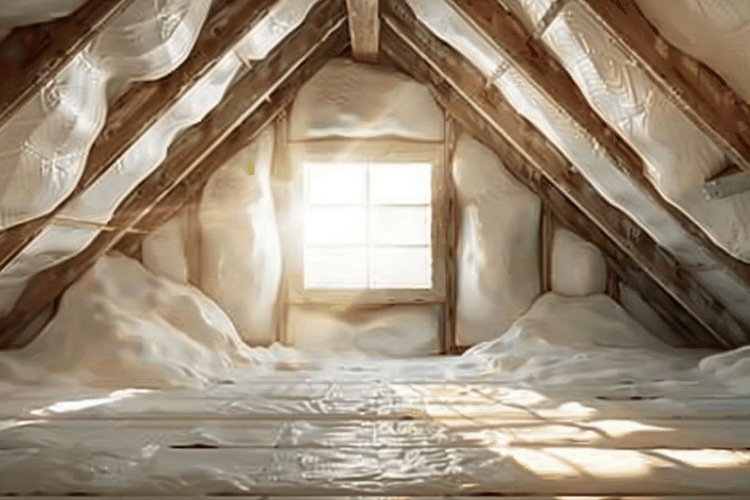Spray Foam Insulation: Benefits, Types, and Installation Guide
Spray foam insulation is a high-performance building material used to seal, insulate, and improve the airtightness of walls, roofs, and cavities. It forms a continuous barrier against air infiltration and moisture when applied correctly, which can reduce drafts, stop thermal bridging, and improve comfort year-round. Homeowners and builders increasingly choose spray foam for retrofit and new-construction projects because of its long-term durability and ability to adapt to irregular cavities. This overview explains how it works, the main types, installation expectations, safety considerations, and practical tips for finding qualified local services in your area.

What is spray foam and how does it work?
Spray foam is a polymer-based insulation sprayed as a liquid that expands and cures into a rigid or semi-rigid foam. During application, two liquid components mix at the nozzle and react, expanding to fill gaps and adhere to surfaces. This expansion creates a continuous insulating layer that blocks convective air movement and reduces heat transfer. Because it seals gaps around windows, plumbing penetrations, and framing, spray foam can outperform traditional batt insulation in both thermal resistance and air-sealing performance when installed by experienced applicators.
What are the main types and their uses?
There are two primary categories: open-cell and closed-cell foam. Open-cell foam is lighter, more flexible, and has lower R-value per inch, making it suitable for interior wall cavities and sound dampening. Closed-cell foam is denser, has a higher R-value per inch, and acts as a moisture vapor retarder, so it’s often specified for exterior walls, roofs, and below-grade applications where space is limited and moisture control matters. Product formulations and performance can vary, so reviewing technical data sheets for density, R-value, and permeability helps match a type to a specific application.
How is the installation process and what should you expect?
Professional installation typically begins with a site assessment to identify existing problems like moisture, rot, or inadequate ventilation. Surfaces must be clean and dry. Applicators spray in thin passes to control expansion and curing; multiple lifts produce a uniform layer. Installations can be completed in hours for a typical room but require ventilation during and shortly after application. Because spray foam bonds to most substrates, it can complicate future repairs or changes to framing unless planned ahead. Hiring certified installers helps ensure correct mixing ratios, temperature control, and proper curing for long-term performance.
Health, safety, and maintenance considerations
During application, chemicals in the uncured foam can release vapors and isocyanates that require respirators and protective gear for installers and temporary vacancy of the space for occupants. Once fully cured, most formulations are stable and inert, but occupants with chemical sensitivities should discuss options with a professional. This article is for informational purposes only and should not be considered medical advice. Please consult a qualified healthcare professional for personalized guidance and treatment. Regular checks for moisture intrusion, roof leaks, or physical damage will preserve the insulation’s performance. Avoid DIY large-volume projects without proper training and protective equipment.
Energy performance and practical benefits
Spray foam’s ability to combine insulation with air sealing can reduce heating and cooling loads by limiting air leaks and thermal bridging. It often improves comfort by evening indoor temperatures and reducing humidity-driven condensation in cold climates. In many retrofits, the most measurable gains come from sealing attic planes, rim joists, and penetrations rather than simply increasing nominal R-value. Compatibility with HVAC sizing and ventilation strategies is important—making sure mechanical systems are balanced after improving building tightness prevents indoor air-quality issues and maintains fresh-air ventilation.
Finding qualified installers and what to ask
Look for experienced contractors who can provide references, photos of past jobs, and details about product types and performance data. Ask about certifications, warranty terms, ventilation plans after installation, and how they handle substrate preparation and curing conditions. Seek estimates from multiple local services to compare scopes of work and ensure pricing reflects the skill and equipment needed for correct application. If allergies or indoor air concerns exist, request product data sheets and curing timeframes so you can plan occupant relocation if necessary.
Spray foam can be a valuable solution for improving thermal performance and airtightness, but its success depends on correct product selection, professional application, and integrated design that considers moisture, ventilation, and future access to building systems. Properly executed, it offers long-lasting insulation and comfort improvements; poorly executed, it can lead to installation issues and indoor air concerns. Assess project goals, consult with reputable local services, and plan for ventilation and maintenance to get the best performance from this technology.






